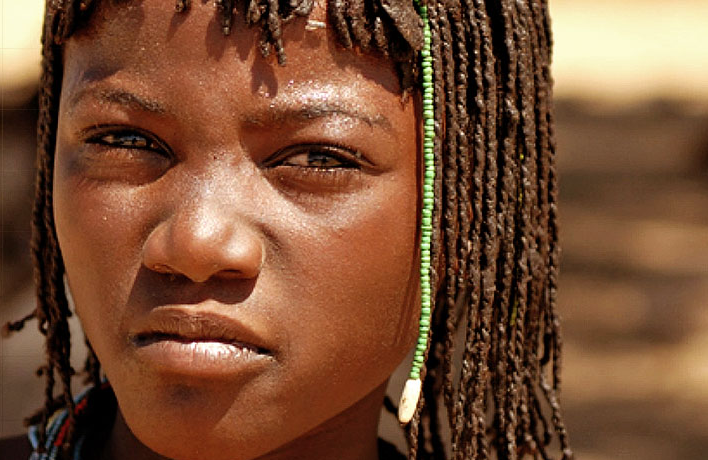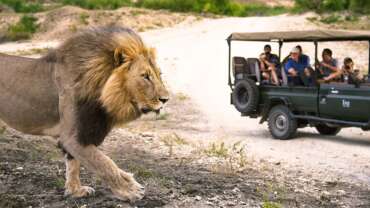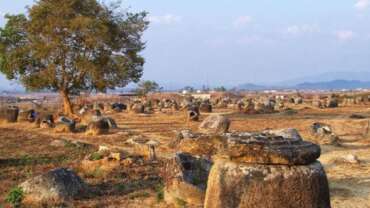Namibia - Endless Horizons
Namibia, a country in southwest Africa, is distinguished by the Namib Desert along its Atlantic Ocean coast. The country is home to diverse wildlife, including a significant cheetah population. The capital, Windhoek, and coastal town Swakopmund contain German colonial-era buildings such as Windhoek’s Christuskirche, built in 1907. In the north, Etosha National Park’s salt pan draws game including rhinos and giraffes.
Climb the highest sand dunes in the world. Descend to the floor of the deepest canyon in Africa. Immerse yourself in the past at one of the Africa’s richest rock art sites, and watch wildlife shimmer against one of the most spectacular pans on earth. Explore the oldest, driest desert in the world and take time to listen to the silence and to your soul.
Namibia is home to vibrant cities where people are excited about the future, while remaining deeply connected to their rich, cultural past. A stable, democratic government, infrastructure that allows guests to move confidently off the beaten path and endless horizons that beckon you to explore define this country and its people.
This is Namibia, where you are sure to find adventure, and you may just find yourself.
History of Namibia
The history of this land can be found carved into rock paintings found to the south and in Twyfelfontein, some dating back to 26,000 B.C. A long lineage of various groups including San Bushmen, Bantu herdsmen and finally the Himba, Herero and Nama tribes among others have been making this rugged land home for thousands of years.
But, as Namibia has one of the world’s most barren and inhospitable coastlines, it wasnt until the middle of the nineteenth century that explorers, ivory hunters, prospectors and missionaries began to journey into its interior. Beyond these visitors, Namibia was largely spared the attentions of European powers until the end of the 19th century when it was colonized by Germany.
The colonization period was marred by many conflicts and rebellions by the pre-colonial Namibia population until WWI when it abruptly ended upon Germany’s surrender to the South African expeditionary army. In effect, this transition only traded one colonial experience for another.
In 1966 the South West Africa People’s Organisation (SWAPO) launched the war for liberation for the area soon-named Namibia. The struggle for independence intensified and continued until South Africa agreed in 1988 to end its Apartheid administration. After democratic elections were held in 1989, Namibia became an independent state on March 21, 1990.
To date, Namibia boasts a proud record of uninterrupted peace and stability for all to enjoy.
People of Namibia
Ethnic and linguistic composition
About 85 percent of Namibians are black, 5 percent of European ancestry, and 10 percent, in South African terminology, Coloured (Cape Coloured, Nama, and Rehobother). Of the black majority, about two-thirds are Ovambo, with the Kavango, the Herero, the Damara, and the Caprivian peoples following in population size. Other ethnic groups have much smaller populations. Afrikaners and Germans constitute two-thirds and one-fifth of the European population, respectively. Most ethnic Europeans are Namibian citizens, though some have retained South African citizenship.
English is the national language, though it is the home language of only about 3 percent of the population. Ovambo languages are spoken by more than 80 percent of the population, followed by Nama-Damara with about 6 percent. Kavango and Caprivian languages and Herero, as well as Afrikaans, constitute about 4 percent of home languages. Many Namibians speak two or more indigenous languages and at least a little of two of the three European languages (English, Afrikaans, German) in common use.
Religion
Some 80 to 90 percent of the population at least formally adheres to a Christian confession. About one-half of the population is Protestant, most of whom are Lutheran. Roman Catholics constitute almost one-fifth of the population. Smaller Christian denominations include Dutch Reformed, Anglican, African Methodist Episcopal, Methodist, and Presbyterian groups. A small segment of the population adheres to traditional beliefs.
Cultural Life of Namibia
Namibian cultures are diverse. Just as the culture of the Afrikaners differs significantly from that of the German-speaking community and as both of those cultures differ from that of the more varied technical-assistance community, so do African and Creole cultures differ. The Rehobothers closely resemble the rural Afrikaner culture of the mid-20th century, while the Nama have more in common with the other pastoral black communities, and the “Cape Coloured” have a distinct urban culture with both black and European elements. The northern black cultures—while distinctive as to language and forms of music and dance—formed out of a mixed farming context unlike that of the Damara and Herero. The San are a tragic case. Their culture was ruined by ranch serfdom and wartime exploitation as trackers, and efforts to rebuild from the fragments have been limited by lack of knowledge, resources, and space as well as by the paternalism of many of their self-appointed “guardians.”
With the exception of the San, Namibian cultures appear to be alive and evolving, not least in the urban areas. However, rising unemployment may lead to the breakdown of neighbourhood and other social groupings and to the anomie and lawlessness that characterize the townships of many southern African cities, notably in both Zambia and South Africa. The black cultures are not well supported by formal institutions or the government, owing both to doubts as to what would enable rather than smother their development and to a lack of fiscal resources.
A number of holidays and festivals are observed, most of which are religious or historic in significance, albeit not necessarily of specific current content. Sports are popular among both spectators and participants. A wide variety of sports are followed by the white communities, but the black communities concentrate on football (soccer).
Radio and television broadcasting services are government-owned, as is one daily newspaper. All appear to have substantial intellectual and programmatic freedom. A fluctuating band of party, semiparty, and (in one case) independent newspapers exist and are not subject to censorship, but the survival of most is in doubt for economic reasons. They are supplemented by an array of religious, trade union, and other specialized papers that also have complete freedom of expression.
Discover Namibian Safari

Whether you set out on your own self-drive safari or join a group of like-minded travelers, Namibia is Africa’s best-kept safari destination secret. In Namibia, you have the opportunity to venture into the unknown and yet be completely safe. Visitors can take in the beautiful wildlife and unique landscapes at their own pace, on their own terms. Like nowhere else in Africa, Namibia provides the visitor the opportunity to escape stress, experience peace and freedom, sit and admire the breathtaking landscapes and reflect. From game-packed parks to the silence and spectacle of the desert, this incredible country, its landscapes, people and wildlife are waiting.
Guests embark on their safaris with a feeling of excitement and confidence. Namibia has a stable, democratic government and the country is renowned for the quality of its infrastructure which includes a superb road network, broad cell phone coverage, accommodation and camping choices for every interest and budget and people who are amongst the most friendly and helpful in the world.
Namibia is a land of stark contrasts, where towering dunes meet a tempestuous coastline. As it should be in a land of such contrasts, Namibia offers an endless variety of safari options. Experience the haunting silence of the Kalahari Desert and spot one of 430 bird species in the Caprivi region, search for desert elephants in Damaraland and interact with the astonishing Himba community in the remote Kaokoveld.






